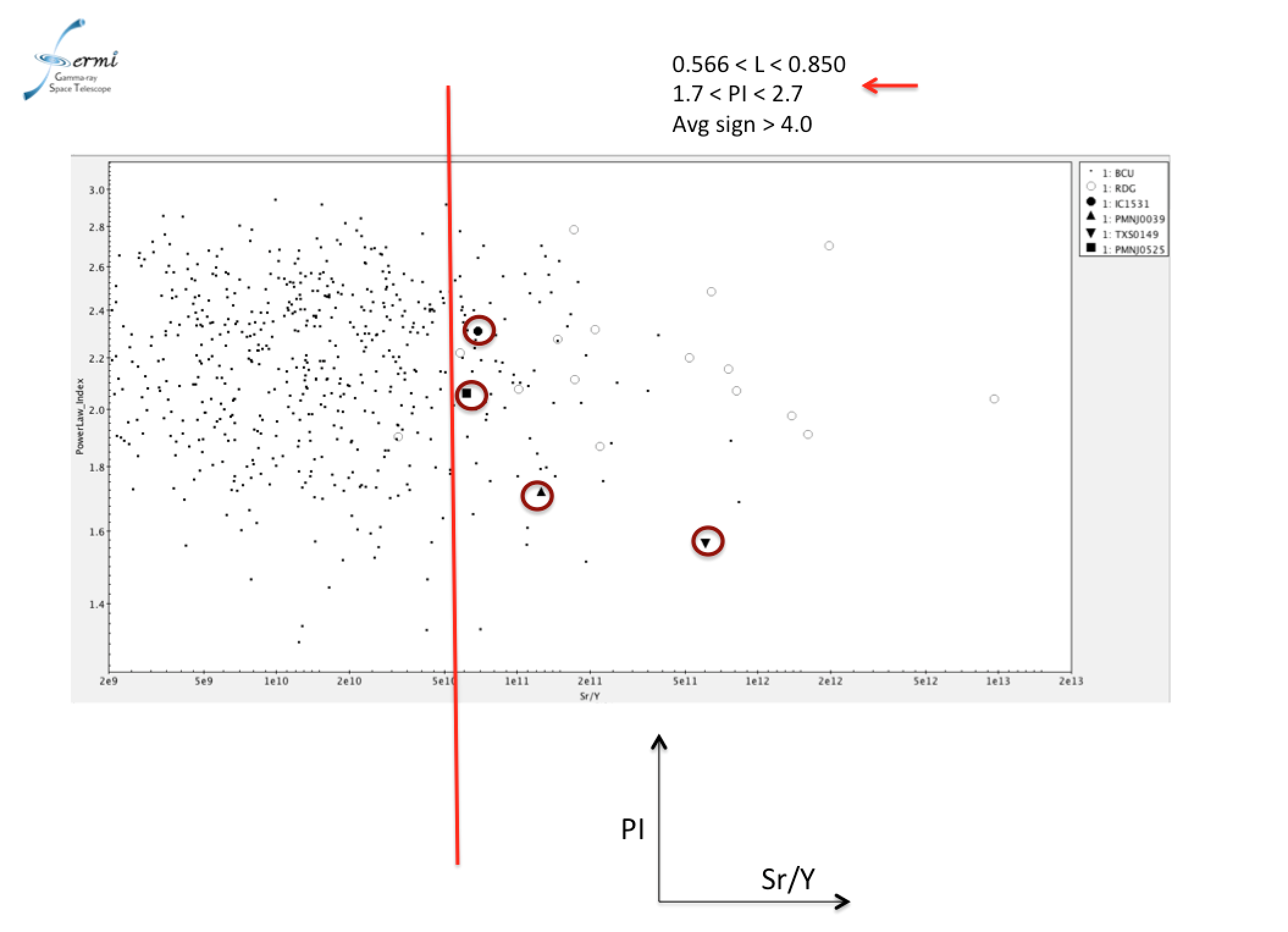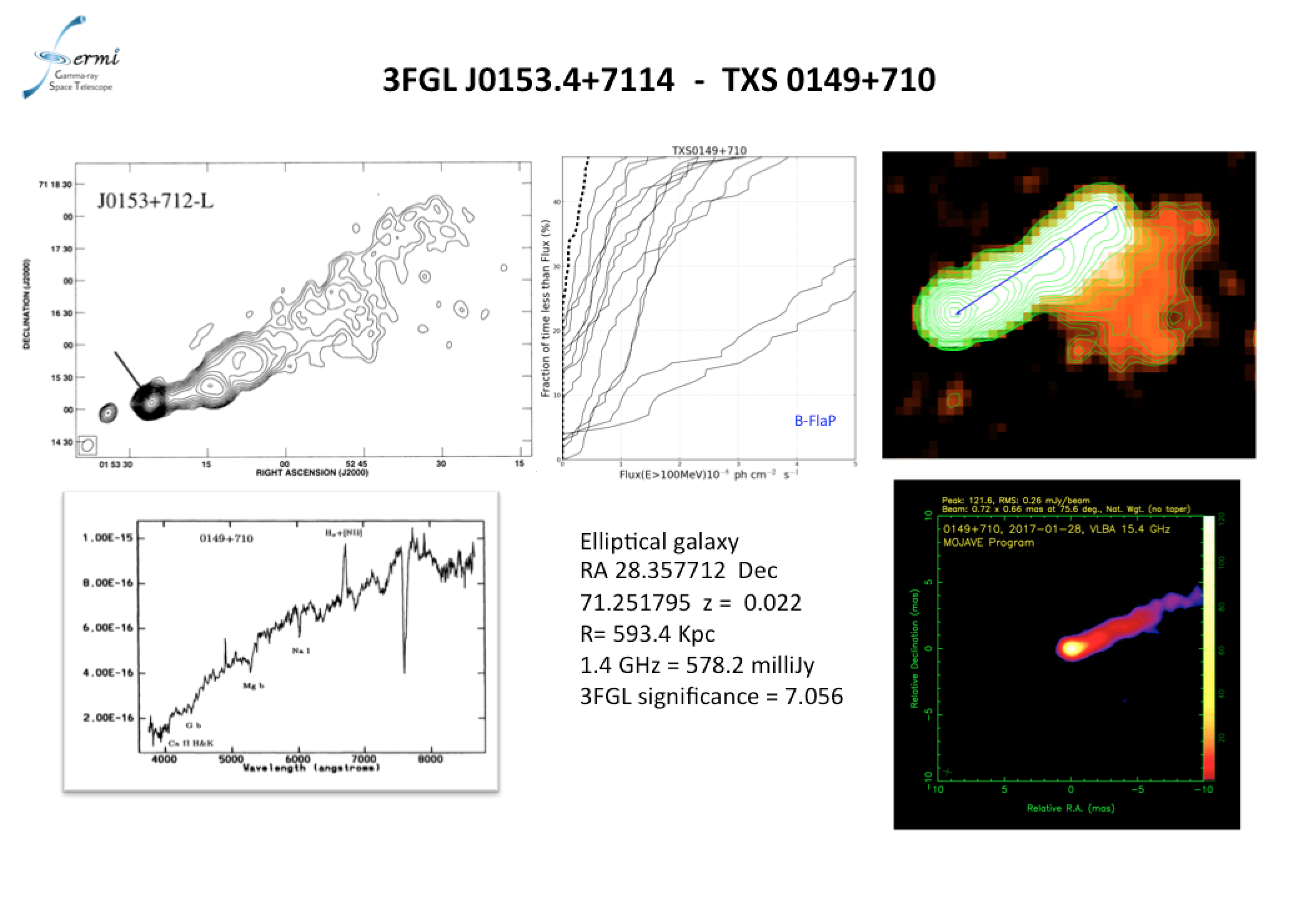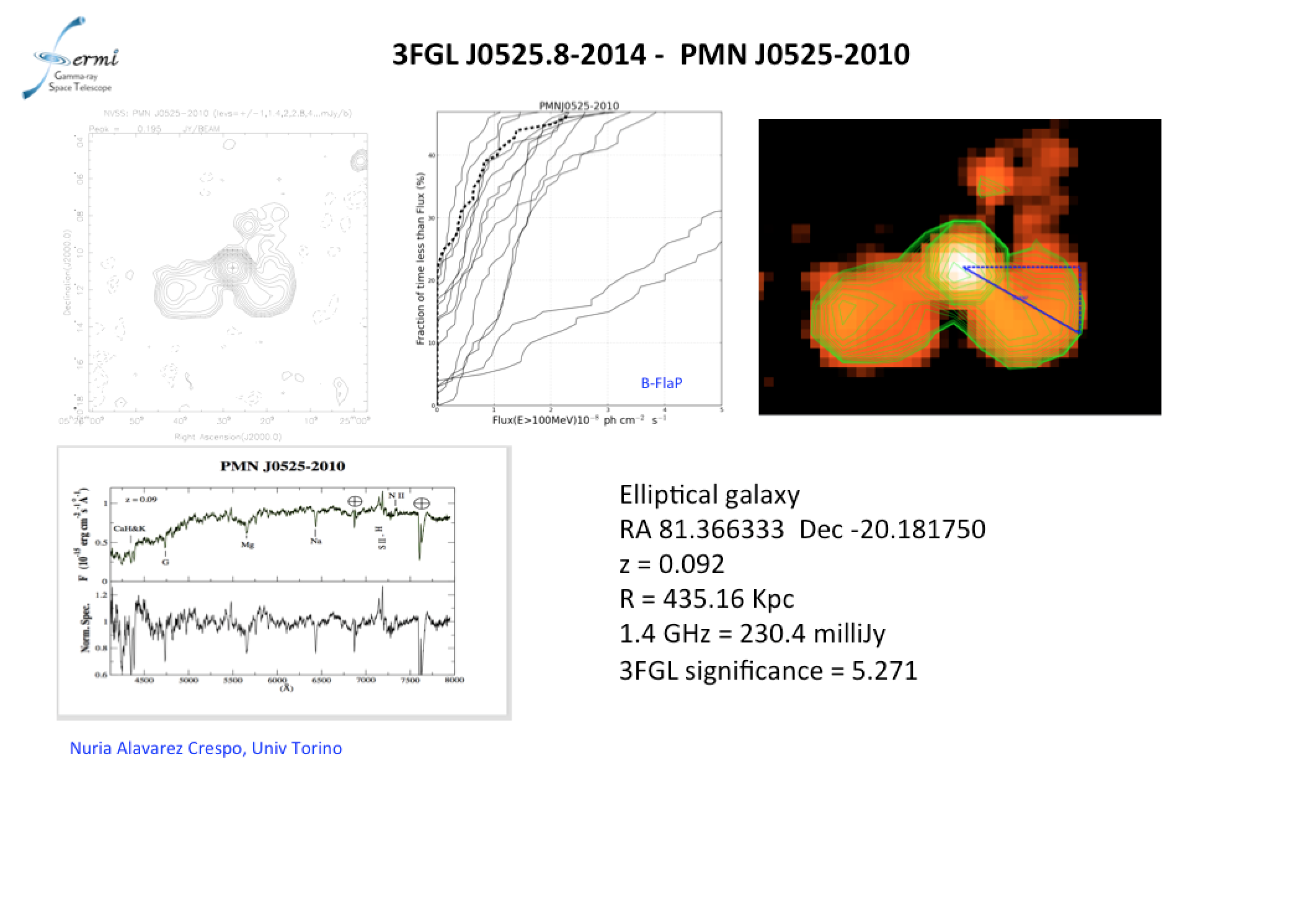Confluence overview for Fermi Gamma-Ray Space Telescope
| Section | ||||||||||||||||||||||
|---|---|---|---|---|---|---|---|---|---|---|---|---|---|---|---|---|---|---|---|---|---|---|
|
| Blog Posts | ||||||||||
|---|---|---|---|---|---|---|---|---|---|---|
|
What's New with Confluence
Read about changes that have recently been applied to the SLAC / FERMI Confluence wiki. Recent changes:
| Blog Posts | ||||||||
|---|---|---|---|---|---|---|---|---|
|
Confluence Tips and Tricks
Read tips for making more effective use of confluence at SLAC and share your own tips. Recent tips:
| Blog Posts | ||||||||
|---|---|---|---|---|---|---|---|---|
|
The discovery of new misaligned active galactic nuclei (MAGN) in the gamma-ray sky of the Fermi} LAT.
G.Chiaro, E.Torresi, G.La Mura, D.Salvetti. external collaborators : P.Grandi IASF/INAF Bologna Italy
We discovered four new radio galaxies candidates associated with gamma-ray sources detected by Fermi LAT. These new sources will increase of the number of MAGN in the gamma population and improve the suspicion of new discoveries in uncertain gamma-ray sources at low redshift range. Studing MAGNs and the knowledge of their environment is extremely interesting because they are the parent population of Blazars which represent more than the 50% of the gamma-ray sky. Hunting MAGN we used a machine learning technique optimized for fast screening of uncertain gamma-ray sources. We used radio analysis and optical spectroscopy based by literature and direct observations as counterparts to validate the discovery and the sources classification.
In the beginning before to get any optical spectra we sorted the candidates from 3FGL uncertain BCUs ( selected by B-FlaP method) by the ratio radio flux/gamma flux vs PI
The new MAGN
3FGL J0153.4+7114 or TXS 0149+710 (2MASX J0153+712-L ) ( redshift = 0.022) is a low power but core dominated radio galaxy with 1.4 GHz radio flux = 578milliJy and a gamma significance = 7.056 , confirmed by our direct observed optical spectra. The source is strongly asymmetric, with a wide jet directed in W-NW direction, with kinks and bends. In the NVSS images, also it seems to see a component in the opposite direction, most probably from a counter-jet.
3FGL J0153.4+7114 coordinates (J2000) are RA = 28.3577125, Dec = + 71.2517950 and redshift = 0.0221.
The optical spectrum, retrieved from literature shows prominent narrow emission lines of Halpha and Hbeta, together with faint emission from OIII and absorption lines of CaII K&H , MgII and NaI . The continuum is typical of old stellar populations, suggesting that the emission lines are originated in gas ionized by the nuclear high energy source. The observed narrow emission line profiles also suggest that the source is oriented away from the line of sight, leading to the obscuration of its innermost regions. The NVSS image shows the arm of the galaxy of R = 593.4 kpc.
The position of the source curve in the B-FlaP ECDF plot is compatible with 3FGL classified MAGN. Furthermore the plot shows a quite vertical ECDF curve of the source which means a quiet flux history and a suspected TeV energy.
3FGL J0009.6-3211 or IC 1531 ( redshift = 0.0256 ) is an elliptical galaxy housing a radio source of 1.4 GHz radio flux = 388.7 milliJy, characterized by the presence of an extension of 416.24 Kpc in the southeast direction and a compact nuclear region. Its optical spectrum shows the characteristic absorption lines of CaII} K&H Mg II and Na I, commonly detected in elliptical galaxies. No signs of emission lines are observed. The optical spectrum, therefore, indicates that the nuclear activity being responsible for the radio and high energy emission must lie beyond a deeply obscured region and be oriented away from the direction of observation.
3FGL J0009.6-3211 coodinates (J2000) RA = 2.398017, Dec -32.276817
3FGL J0525.8-2014 associated with PMN J0525-2010 (redshift = 0.092) and 1.4 GHz radio flux of 230.4 milliJy. The optical spectrum shows a stellar continuum with clear absorption lines typical of an old stellar population, together with faint emission lines of Halpha, N II, S II and O III . These emission lines, produced by an ionized gas component, may be suggestive either of star formation or of weak and obscured nuclear activity. The absence of any significant spectral contribution from a young stellar population and the high energy activity of the source point towards AGN ionization, consistently with the presence of an active nucleus with an orientation axis lying away from the line of sight. In the NVSS image the source shows a two lobes with maximum radio extension of 435.16 Kpc.
3FGL J0039.0-2220 or PMNJ0039-2220 ( redshift = 0.0643) is a lenticular galaxy with the notation S0 reserved for those galaxies for which it is impossible to tell if a bar is present or not. Usually it happens because these galaxies are edge-on to the line-of-sight, as well as MAGN. The source has a 1.4 GHz radio flux of 117.0 milliJy and a 6dFGRS optical spectum where is possible to recognize Ca H&K , Na and SII spectral lines which characterize the galaxy classification. The NVSS extended image shows a two lobes structure of with a maximum extensioni of 350 Kpsc . The source shows an ECDF curve ( dotted line ) which he position is KS compatible with the 3FGL classified radiogalaxies.
3FGL J0039.0-2220 coordinates (J2000) are RA = 9.7842083, Dec = -22.3337222.
Because the redshifts we can show the position of the MAGN candidates in the gamma -luminosity against spectral index plot where our candidate positions are well compatible with specific area of the radiogalaxies as a further confirmation of the goodness of the adopted method.
PAPER IS COMING
Please do not use these data without to contact the authors.
Comments are welcome.
Graziano
...






